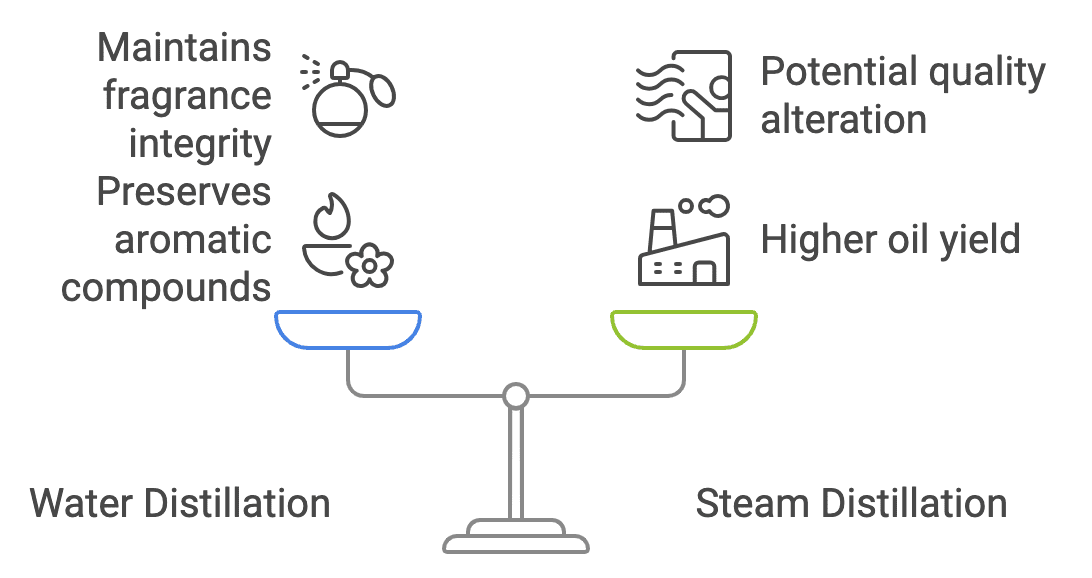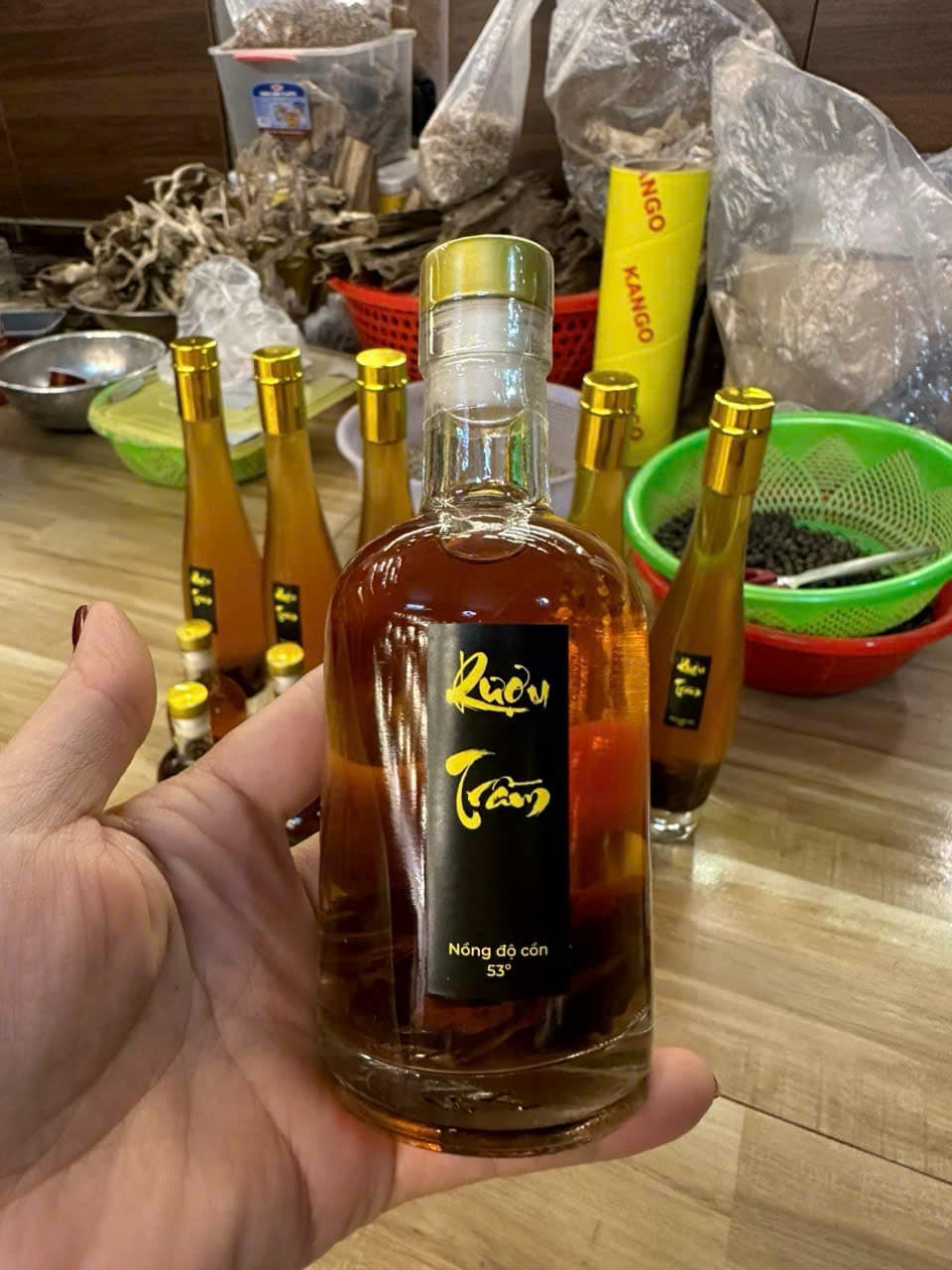
Introduction
Table of Contents
ToggleOud oil, also known as agarwood essential oil, agarwood oil, or oudh oil, is one of the most precious and sought-after natural oils in the world. Derived from the heartwood of the agarwood tree, this natural oud oil holds immense significance in various cultures for its unique aroma and therapeutic properties.
The allure of authentic oud oil lies in its rich history, complex production process, and diverse applications that span across different industries and regions. Its value is not only monetary but also cultural, making it a symbol of luxury, spirituality, and tradition.

What is Oud Oil?
Understanding Agarwood
Agarwood, the source of oud oil, comes from the Aquilaria tree species native to Southeast Asia, including countries like Cambodia, India, Vietnam, and Laos. These trees are part of the Thymelaeaceae family and are known for their ability to produce a dark, fragrant resin when infected with a specific type of mold, typically from the genus Phialophora.
This infection triggers the tree’s defense mechanism, resulting in the formation of a dense, resinous heartwood known as agarwood. The process of resin production is natural yet rare, as it requires the tree to be both healthy and exposed to the right environmental conditions to develop the resin.
The resin-saturated wood is highly valued for its distinctive fragrance, which is complex and multifaceted, combining woody, sweet, and earthy notes. This unique aroma makes agarwood essential oil a cornerstone in the worlds of perfumery and traditional medicine. Historically, agarwood has been used in various cultural rituals, incense burning, and as a natural remedy for a range of ailments, underscoring its multifaceted value beyond its pleasant scent.

“For a comprehensive understanding of all agarwood products, visit the Agarwood Products Overview.”
The Rarity of Pure Oud Oil
The production of pure oud oil is a rare and intricate process influenced by several factors that contribute to its scarcity and high value. Firstly, not all Aquilaria trees produce agarwood; only those that become infected with the appropriate type of mold develop the resin necessary for oud oil production. This infection does not occur uniformly, making the occurrence of resin-producing trees relatively uncommon.
Secondly, the process of resin formation is time-consuming, often taking several years to decades. This prolonged period is necessary for the tree to generate sufficient resin in response to the infection, which means that harvesting agarwood is both time-intensive and uncertain.
Additionally, the geographical distribution of agarwood-producing trees is limited to specific regions in Southeast Asia, where environmental conditions such as climate, soil quality, and altitude play a crucial role in resin development. Over-harvesting and illegal logging have further exacerbated the scarcity of high-quality agarwood, leading to strict regulations and the implementation of sustainable harvesting practices.
These factors combined make natural oud oil one of the most expensive oils in the world, with prices reflecting its rarity, the complexity of its extraction, and the high demand from luxury markets. To understand oud oil, we must first grasp the definition of agarwood and its significance in various cultures.

The Production Process of Oud Oil
Natural Oud Oil Extraction Methods
The extraction of oud oil is a meticulous and labor-intensive process that combines traditional methods with modern technology to ensure the preservation of the oil’s delicate aromatic compounds. The goal is to obtain authentic oud oil that retains the rich and complex fragrance profile that makes it so highly prized.
Distillation Techniques
There are two primary methods used for oud oil extraction: water distillation and steam distillation.
- Water Distillation: In this traditional method, agarwood chips are first soaked in water to soften the wood and facilitate the release of the essential oils. The soaked chips are then boiled, and the resulting steam carries the essential oils as it rises. The steam is subsequently condensed back into liquid form, separating the oud oil from the water. This method is known for preserving the full spectrum of aromatic compounds, resulting in a rich and nuanced fragrance.
- Steam Distillation: This method involves passing steam directly through the agarwood chips without prior soaking. The steam helps to extract the essential oils more efficiently, often resulting in a higher yield of oud oil. However, this technique can sometimes affect the oil’s quality, potentially altering its natural fragrance profile. The choice between water distillation and steam distillation depends on the desired quality and characteristics of the final product. High-quality producers often prefer water distillation to maintain the oil’s integrity, especially when aiming to produce the best oud oil in the world.

Ethical and Sustainable Practices
Given the high demand and the ecological impact of agarwood harvesting, ethical and sustainable practices are crucial in the oud oil industry. Over-harvesting and unsustainable logging practices have led to the depletion of wild agarwood trees, threatening their survival and disrupting ecosystems.
To combat this, ethical producers focus on cultivating agarwood through plantation-grown trees, ensuring a controlled and sustainable supply. These plantations are managed to optimize resin production without compromising the health of the trees or the environment.
Sustainable harvesting methods are implemented to minimize the impact on natural forests and promote the regeneration of agarwood trees. Additionally, certification programs and adherence to international regulations help ensure that consumers receive authentic oud oil produced responsibly.
Organizations such as the Convention on International Trade in Endangered Species (CITES) regulate the trade of agarwood, ensuring that it is sourced legally and sustainably. By supporting certified producers, consumers can contribute to the preservation of agarwood species and the sustainability of the natural oud oil market.

Factors Affecting Quality
Several factors influence the quality of oud oil, ranging from the biological characteristics of the agarwood trees to the environmental conditions in which they grow.
- Age of the Agarwood Tree: Older trees generally produce resin with a more complex and refined aroma. As the tree ages, it undergoes more cycles of infection and resin production, resulting in a richer and more concentrated oil.
- Environmental Conditions: The soil composition, climate, and altitude where the agarwood trees are grown significantly impact resin development. Trees grown in nutrient-rich soil with optimal moisture levels tend to produce higher quality resin. Additionally, variations in climate, such as temperature and humidity, can affect the resin’s chemical composition, influencing the final fragrance of the agarwood essential oil.
- Resin Formation Process: The method by which the resin is induced, whether naturally through infection or artificially through techniques like inoculation, can affect the oil’s quality. Naturally formed resin often results in a more nuanced and superior fragrance compared to artificially induced resin.
- Extraction Method: As previously mentioned, the choice of extraction technique plays a critical role in determining the oil’s purity and fragrance profile. Water distillation is typically preferred for higher quality oud oil, while steam distillation may be used for efficiency but can sometimes compromise quality.
- Storage and Aging: Proper storage conditions, including temperature and light exposure, are essential to maintaining the oil’s quality. Some producers also age the oud oil for extended periods to allow the fragrance to mature and develop deeper layers of complexity.

Uses and Benefits of Oud Oil
Aromatherapy and Perfumery
Oud oil is a coveted ingredient in high-end perfumes due to its rich, deep, and long-lasting fragrance. Its unique aroma adds a warm and luxurious base note that enhances and complements other scents in a fragrance composition. In perfumery, oud oil is often blended with floral, spicy, and woody notes to create complex and sophisticated perfumes that appeal to discerning consumers.

Its ability to linger on the skin for extended periods makes it a favorite among those who appreciate enduring scents. “The complexity of oud essential oil greatly influences agarwood perfume creation.”
In aromatherapy, agarwood essential oil is valued for its calming and grounding effects. It is believed to reduce stress, anxiety, and promote a sense of tranquility and well-being. The soothing aroma of oud oil can help create a peaceful environment, making it a popular choice for meditation practices and relaxation routines. Additionally, its uplifting properties are thought to enhance mental clarity and emotional balance, contributing to overall mental health.
Medicinal Properties
Traditionally, oud oil has been used in various medicinal applications across different cultures. It is believed to possess anti-inflammatory and analgesic properties, making it effective in relieving pain and reducing inflammation. In traditional medicine systems such as Ayurveda and Traditional Chinese Medicine (TCM), oud oil is used to treat a range of ailments, including digestive issues, respiratory problems, and skin conditions.
Recent scientific studies have begun to explore the potential health benefits of natural oud oil. Research suggests that it may have antioxidant properties, which help protect the body against free radicals and oxidative stress. Antioxidants are crucial for maintaining overall health and preventing chronic diseases. Additionally, oud oil may exhibit antimicrobial and antifungal properties, contributing to its use in wound healing and skin care applications.
Cultural and Spiritual Significance
In many cultures, oudh oil holds profound spiritual importance. It is often used in religious ceremonies, meditation practices, and as incense to purify spaces and create a sacred atmosphere. In Islamic traditions, oud oil is used during prayers and religious gatherings to enhance the spiritual experience and create a sense of reverence and devotion.
The unique aroma of authentic oud oil is believed to enhance spiritual experiences by fostering a deeper connection to the divine and facilitating mindfulness during meditation. In Hinduism and Buddhism, oud oil is used in rituals and offerings, symbolizing purity and enlightenment. Its use as incense helps in cleansing spaces of negative energies and promoting a harmonious environment conducive to spiritual growth.

“In addition to its use in perfumery, agarwood incense benefits extend to spiritual practices.”
How to Identify Authentic Oud Oil
Characteristics of Genuine Oud Oil
Identifying authentic oud oil involves a careful examination of its scent profile, color, and viscosity. Pure oud oil typically exhibits a deep, complex aroma that evolves over time when applied to the skin, revealing layers of woody, sweet, and earthy notes. This multi-dimensional fragrance is a hallmark of high-quality oud oil.
In terms of appearance, pure oud oil is usually dark in color, ranging from amber to deep brown, and has a thick, viscous consistency. The oil should feel rich and slightly sticky to the touch, indicating a high concentration of aromatic compounds. The fragrance should be long-lasting, maintaining its presence without the need for frequent reapplication.
Additionally, genuine oud oil often has a natural variation in scent, reflecting the unique characteristics of the agarwood from which it was derived. This variability distinguishes authentic oil from synthetic or adulterated versions, which may have a more uniform and less complex aroma.
Avoiding Imitations
Due to its high value, oud oil is often subject to adulteration and imitation. Common practices to fake oud oil include diluting the oil with cheaper carrier oils such as sandalwood or jojoba oil, or blending it with synthetic fragrances to mimic its scent. These practices can significantly reduce the quality and authenticity of the oil, making it essential for consumers to be vigilant when purchasing oud oil.
To ensure you are purchasing natural oud oil, it is advisable to buy from reputable suppliers who provide certificates of authenticity. These certificates verify the purity and origin of the oil, ensuring that it has been sourced and produced ethically and sustainably.
Additionally, transparency about sourcing and production methods is a good indicator of a trustworthy supplier. Conducting thorough research, reading reviews, and seeking recommendations can also help in identifying reliable sources of genuine oud oil.
The Global Market for Oud Oil
Leading Producers
Countries like Cambodia, India, Vietnam, and Laos are renowned for producing the best oud oil in the world. These regions offer ideal growing conditions for agarwood trees, including the right climate, soil quality, and altitude, which contribute to the high quality of the resin and, consequently, the oud oil. The long history of oud oil extraction practices in these countries has led to the development of sophisticated techniques and expertise, further enhancing the quality and reputation of their products.
In Cambodia, for example, the tradition of agarwood cultivation and oud oil production dates back centuries, with techniques passed down through generations. Similarly, in India, particularly in states like Assam and Odisha, agarwood cultivation has become a significant economic activity, supporting local communities and contributing to the country’s export economy. Vietnam and Laos have also made substantial strides in sustainable agarwood farming, balancing economic benefits with environmental conservation.
The industry significantly impacts local economies, providing livelihoods for many communities involved in cultivation, harvesting, and distillation. Small-scale farmers, artisans, and distillers rely on oud oil production for their income, making it a vital economic driver in these regions. Additionally, the global demand for oud oil has encouraged investment in agarwood plantations and modern distillation facilities, further boosting economic growth and development.

Consumer Demand and Trends
The demand for agarwood essential oil continues to grow, driven by its popularity in luxury markets and increased awareness of its unique properties. Oud oil has become a symbol of status and sophistication, particularly in the Middle East, where it is highly prized and widely used in personal grooming and home fragrances. Its appeal has also extended to Western markets, where luxury brands incorporate oud oil into high-end perfumes and cosmetics. Insights from the agarwood industry can provide valuable perspectives on the market for oud oil.
Oud oil uses have expanded beyond perfumery into various other sectors, including cosmetics, personal care products, and holistic therapies. Skincare products infused with oud oil are marketed for their antioxidant and anti-aging benefits, appealing to consumers seeking natural and effective ingredients. In personal care, oud oil is used in soaps, shampoos, and lotions, adding a luxurious touch to everyday products.

Holistic therapies and wellness practices have also embraced oud oil for its purported therapeutic benefits. Aromatherapy practitioners use agarwood essential oil to promote relaxation, reduce stress, and enhance mental clarity. Its incorporation into massage oils and therapeutic blends highlights its versatility and the growing trend towards natural and holistic health solutions.
This trend underscores the importance of sustainable practices to meet consumer needs without depleting natural resources. As the popularity of oud oil continues to rise, the industry faces the challenge of balancing high demand with ecological responsibility. Sustainable cultivation and ethical harvesting are essential to ensure the long-term availability of natural oud oil and to protect agarwood species from over-exploitation.
Conclusion
Oud oil stands as a testament to nature’s ability to create something truly extraordinary. From its complex production process to its diverse applications, authentic oud oil remains a symbol of luxury and cultural significance across the globe. Its rich history, spanning centuries and diverse cultures, highlights its enduring appeal and the profound impact it has had on human society.
As interest in natural oud oil continues to rise, it is essential to support sustainable practices that preserve this precious resource for future generations. Ethical cultivation, responsible harvesting, and adherence to international regulations are critical in ensuring that oud oil remains available without compromising the health of agarwood populations and the ecosystems they inhabit. Consumers play a vital role in this process by choosing reputable suppliers and prioritizing sustainably produced oud oil.
The global market for oud oil is poised for continued growth, driven by its expanding uses in luxury goods, personal care, and holistic wellness. By fostering a balance between demand and sustainability, the oud oil industry can thrive while safeguarding the natural and cultural heritage that makes this oil so invaluable. Ultimately, oud oil embodies the harmonious blend of nature, tradition, and modernity, making it a truly remarkable and cherished natural product.
FAQs
1. Why is oud oil so expensive?
Oud oil, often called “liquid gold,” is expensive due to the rarity and time-intensive production of agarwood resin. Only Aquilaria trees infected with specific mold produce this resin, and it can take years to develop. The complex extraction process, limited geographic regions for production, and high demand in luxury markets further drive up its price.
2. How can I tell if my oud oil is authentic?
Authentic oud oil has a deep, multi-layered aroma that evolves over time, with woody, earthy, and sweet notes. It should be dark in color and have a thick, sticky consistency. To ensure authenticity, purchase from reputable suppliers who provide certificates of origin and quality, verifying sustainable and ethical sourcing.
3. What are the main uses of oud oil?
Oud oil is used in perfumery for its luxurious, long-lasting aroma and as a base note in fragrances. In aromatherapy, it promotes relaxation, reduces stress, and enhances meditation practices. Additionally, oud oil is valued for its antimicrobial, anti-inflammatory, and antioxidant properties in traditional medicine and skincare products.
4. Is there a difference between natural and synthetic oud oil?
Yes, natural oud oil comes from the resin of infected Aquilaria trees and has a complex, evolving aroma. Synthetic oud oil, created in labs to mimic this fragrance, lacks the depth and authenticity of natural oud. Many people prefer natural oud oil for its therapeutic benefits and rich, genuine scent.
5. How can I support sustainable oud oil production?
To support sustainability, buy from suppliers that adhere to international regulations, such as CITES, and prioritize sustainably cultivated agarwood. Choose certified products that guarantee ethical sourcing and support companies focused on preserving natural agarwood resources.
Author
Pham Thi Mai Huong is the Sales Director of Oudgo, responsible for managing the sales team, developing relationships with customers, and establishing strategic partnerships. She holds a Bachelor’s degree in Business Administration from Ho Chi Minh City University of Economics and brings over twelve years of experience in sales and market development. Prior to joining Oudgo.Ms. Huong worked with companies specializing in the export and distribution of premium products, where she developed expertise in expanding market reach and driving sales growth. Her leadership and strategic approach have been key in enhancing Oudgo’s sales performance and strengthening its presence in the market see more
